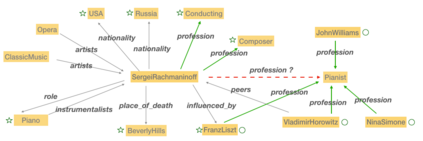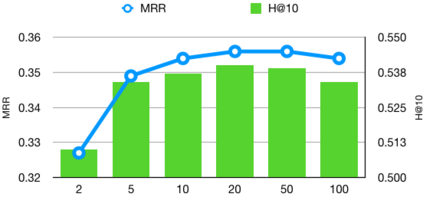Translational distance-based knowledge graph embedding has shown progressive improvements on the link prediction task, from TransE to the latest state-of-the-art RotatE. However, N-1, 1-N and N-N predictions still remain challenging. In this work, we propose a novel translational distance-based approach for knowledge graph link prediction. The proposed method includes two-folds, first we extend the RotatE from 2D complex domain to high dimension space with orthogonal transforms to model relations for better modeling capacity. Second, the graph context is explicitly modeled via two directed context representations. These context representations are used as part of the distance scoring function to measure the plausibility of the triples during training and inference. The proposed approach effectively improves prediction accuracy on the difficult N-1, 1-N and N-N cases for knowledge graph link prediction task. The experimental results show that it achieves better performance on two benchmark data sets compared to the baseline RotatE, especially on data set (FB15k-237) with many high in-degree connection nodes.
翻译:以翻译为基础的远程知识图嵌入显示,从TransE到最新的最新RotateE等链接预测任务逐步改进。然而,N-1、1-N和N-N预测仍然具有挑战性。在这项工作中,我们提议对知识图链接预测采用新的基于翻译的远程方法。拟议方法包括两重内容,首先是将Rotate从2D复杂域扩大到具有正方位变换的高维空间,然后将其扩展至具有正方位变换的空间,以建立更好的建模能力的模型关系。第二,通过两个定向背景演示,对图形背景作了明确的建模。这些背景展示被作为远程评分功能的一部分,用于测量培训和推论期间三重的概率。拟议方法有效地提高了知识图链接预测任务中N-1、1N和N等困难案例的预测准确性。实验结果显示,它比基准数据集(特别是数据集(FB15k-237)在两个基准数据集上取得更好的表现,并有许多高度连接节点。







